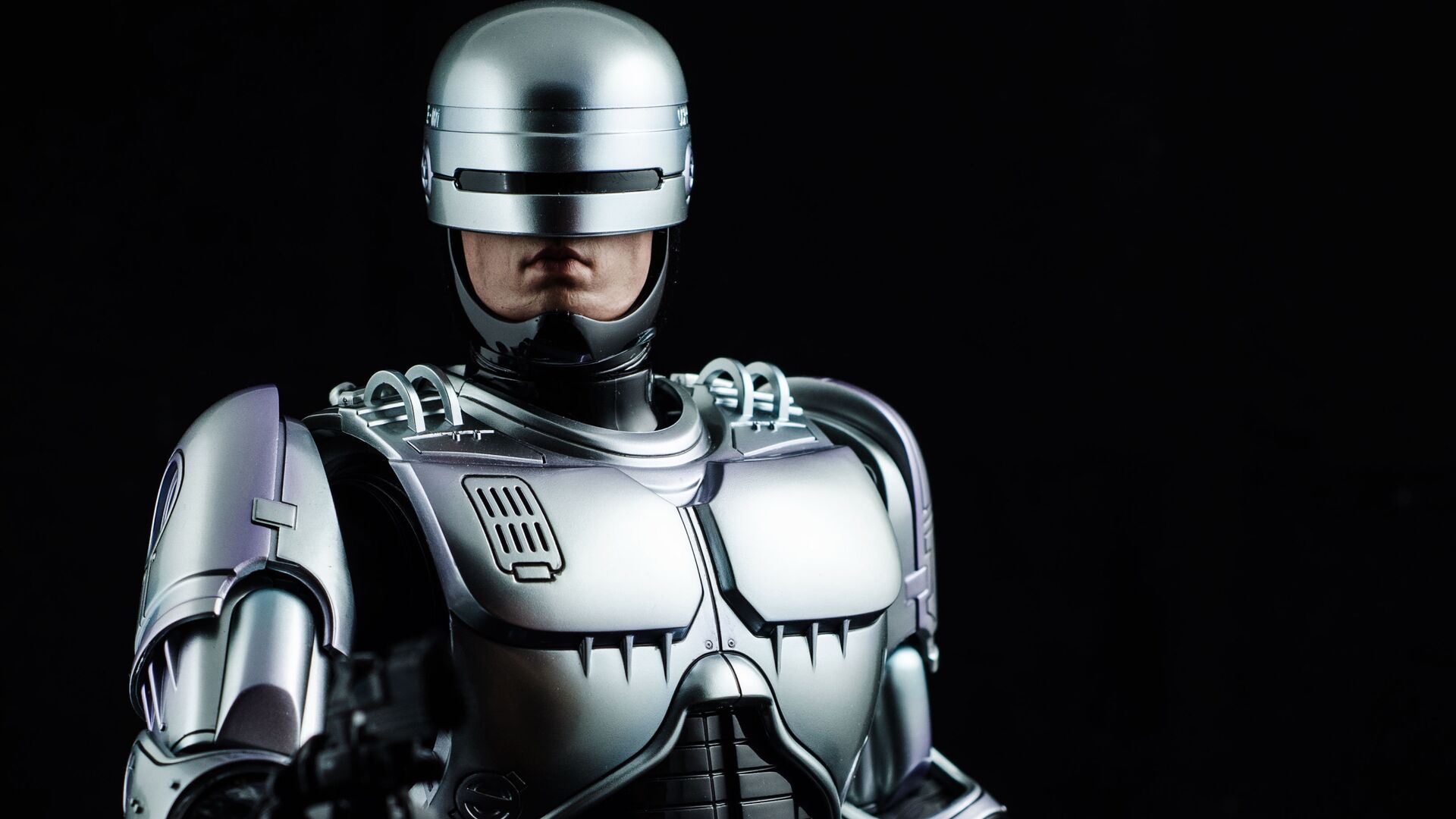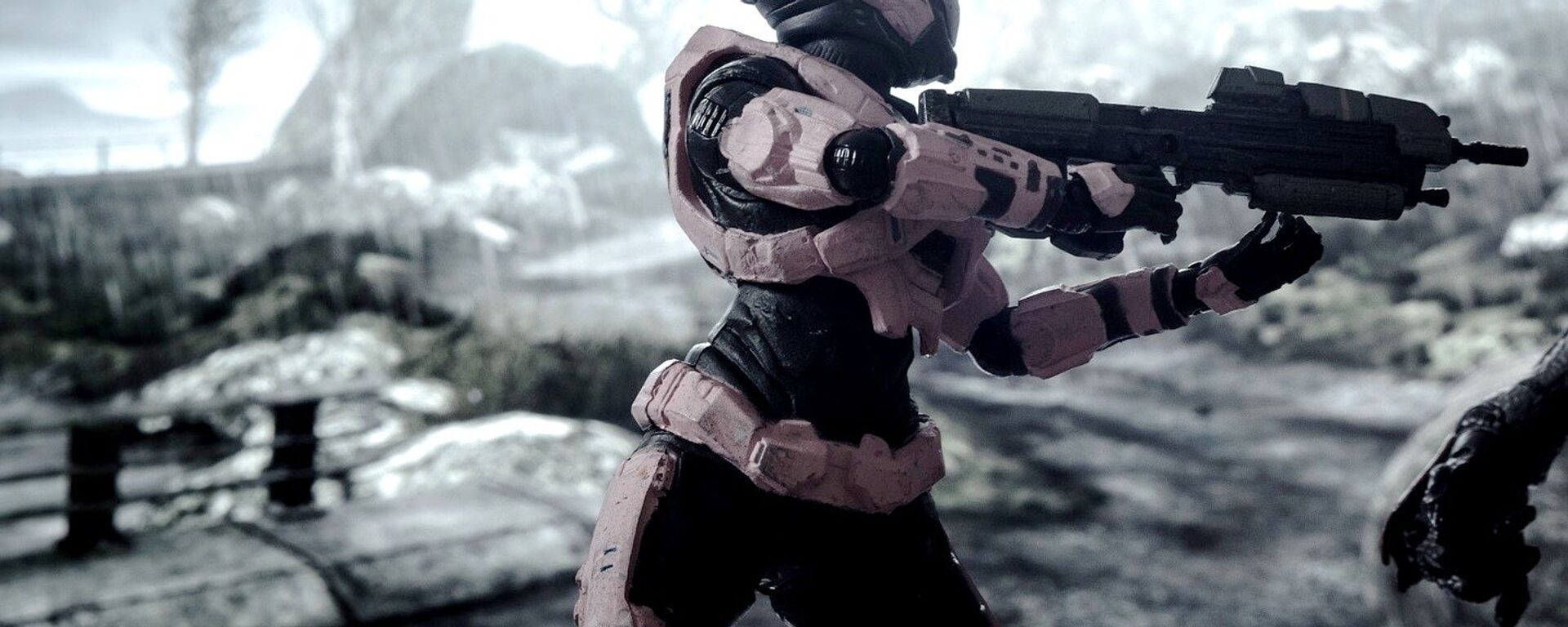RoboCops: Is Use of Deadly Robots by San Francisco Police Justified?
Subscribe
After a heated debate, San Francisco Board of Supervisors voted to allow its potentially lethal, remote-controlled robots to use deadly force in extreme circumstances to save or prevent further loss of innocent lives on November 29.
"[A]ll I could think of was RoboCop and today the use of robotic dogs by SWAT in New York which is straight out of War of the Worlds," Dr. David Thomas, a retired police officer and professor of forensic studies at Florida Gulf Coast University, told Sputnik.
"The truth is that for years SWAT has been using some form of robot to enter buildings to search them for bomb activity and hostage negotiators have used them in some instances as a form of communication when police have been unable to enter buildings or establish communication with barricaded suspects. In many of those instances, the robot could be armed and deadly force could be used if it meant that it would limit the loss of life or injury to both hostages and officers," he continued.
Earlier, the San Francisco Police Department (SFPD) specified that even though it has been using robotic systems for the last 11 years it does not have pre-armed robots, nor does it have plans to equip robots with guns in the future.
Instead, robots could be equipped with explosive charges "to contact, incapacitate, or disorient violent, armed, or dangerous suspects (…) to save or prevent further loss of innocent lives," as SFPD spokesperson Allison Maxie said in an official statement.
The SFPD is using several types of unmanned remotely piloted ground vehicles which include explosive ordnance disposal robots, as well as reconnaissance, communications, and heavy lift systems. However, law enforcement officers are banned from using these machines outside of training and simulations, criminal apprehensions, critical incidents or during suspicious device assessments.
The department's internal document makes it clear that robots "will only be used as a deadly force option when risk of loss of life to members of the public or officers is imminent and outweighs any other force option available to SFPD."
There are certain cases where robots come in handy for law enforcement officers, explained Sputnik's interlocutor. A mass shooting incident is one glaring example where robots could save first responders' lives, according to Thomas. He bemoaned the fact that in the past couple of years there have been numerous deaths to officers during entries.
In particular, the retired police officer recalled the July 7, 2016, shooting spree in Dallas, Texas, where 12 police officers were shot and 5 murdered by a sniper. To mitigate the risks, the Dallas Police Department used a robot to deliver explosives to neutralize the suspect, Thomas explained.
"The risk of further death or injury to the officers and public at large was great so they used the robot," he stressed. "The decision was made by humans and the robot delivered the use of deadly force. This decision limited the further loss of life and injury to officers and citizens."
One needs to keep in mind that in entries, even for SWAT teams who are trained to enter buildings in hazardous situations, the use of robots would limit their exposure to injury and/or death, according to the former law enforcement officer.
"Where the robots could certainly come in handy, would be in barricaded subject and hostage situations where they have time to get the robots there," suggested Dr. Tod Burke, a former Maryland police officer and retired professor of criminal justice at Radford University in Virginia. "Usually the use of deadly force is done by the officer on the scene by weighing all possible legal options."
Still, Burke emphasized that deadly force is a last resort, not the first.
In addition, robots could be the "eyes and ears of the police officers," he continued. While these unmanned devices cannot be used in an arrest situation, they can do surveillance and "communicate," he noted. Last but not least, robots may reduce the risk of police brutality, according to Burke.
Robots & Life-and-Death Decisions
The use of killer-robots triggers ethical and legal questions, according to the observers. Make no mistake, the unmanned device should not be allowed to take life-and-death decisions autonomously, warned the former law enforcers.
"To use robots without human control would be very dangerous, although artificial intelligence has grown by leaps and bounds. I don't see a situation where police will allow artificial intelligence to make such decisions," Thomas said.
"Honestly if the intention is to use robots as the final arbiter in life or death decisions it might be that they are looking for some other justification for the use of deadly force; or looking for some other resource to justify that decision. As I am thinking about this, it would be easy to say that the robot made the decision. However, if this is the thinking it is scary because who takes responsibility for the decision?" the retired police officer asked rhetorically.
In addition, the dangers really could be that the equipment doesn't work, the robot malfunctions, added Burke. "That could certainly be problematic," he said. Therefore it's important that the police maintain control over their deadly robots. Alas, even in that case human error is still possible, admitted the former police officer.
Meanwhile, the US mainstream press admitted that the decision to use lethal robots was preceded by an emotionally charged debate that ran more than two hours. Supervisor Rafael Mandelman acknowledged that he was troubled by rhetoric painting the police department as untrustworthy and dangerous. Earlier, police oversight groups raised concerns about what they called further militarization of law enforcement in the US.
Why SFPD Wants to Use Robots
The Tuesday vote came in response to a new California state law, which requires police departments to inventory military-grade equipment and seek approval for its use. The 2021 legislation was aimed at providing the public the opportunity to weigh the pros and cons of the use of military-grade weapons by the police.
One might ask what prompted robot use-of-force to become a crucial issue in the city.
"In my opinion, police officers are fed up with the anti-police sentiments around the country, including San Francisco, the never-ending accusations of racism, brutality, excessive use of force, etc. and feel that maybe if a machine is going to engage in the use of force execution the end result will generate less criticism and less accusations," observed Professor Maria Haberfeld, the chair of the Law and Police Science Department at John Jay College of Criminal Justice. "In a way, it is a natural development, after the adoption of the Body Worn Cameras - more transparency of the decision-making process."
The 2020 Black Lives Matter protests over African-American George Floyd's death in police custody rocked the country, being accompanied by looting and arson. One of the main slogans of protesters was to "defund the police."
At that time, San Francisco Mayor London Breed was among the liberal politicians in major blue cities who diverted funds from the police that summer.
"We will redirect $120 million from law enforcement to support these priorities over the next two years. Let me repeat that. This is $120 million," said Breed in her announcement on July 31, 2020.
The Frisco press lauded the move calling it "a gesture of reparations" for the city's African-American residents. However, the city authorities' enthusiasm soon faded as crime rates soared in the Golden City. Homicides increased by 20% in 2020 compared to 2019, and by 17% in 2021 compared to 2020, while burglaries jumped by 47% in 2020.
The "reparation" policy left the SFPD underfunded and understaffed as many law enforcers opted to resign. Thus, eventually, Breed reversed course on defunding and requested more funding and equipment to bolster the city's police and address soaring crime rates.
Haberfeld believes that robots will be used very rarely and only in high-profile events: "We have a tremendous number of active shooter situations in the US but they are distributed over the thousands of police forces that we have, hence on a daily basis it will not change much for the way policing is conducted."





